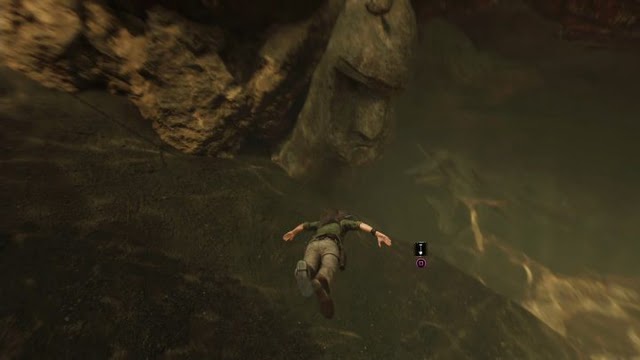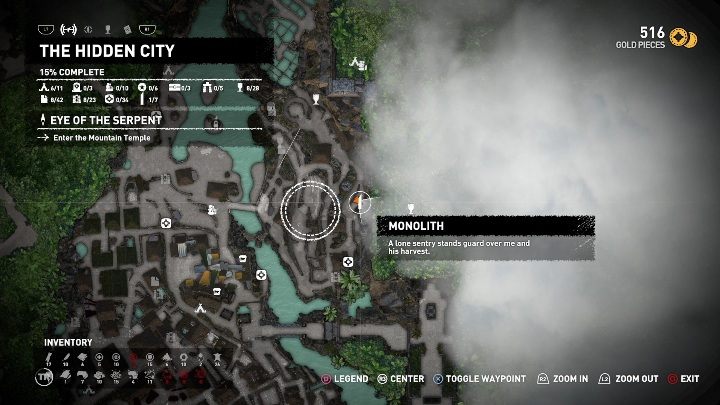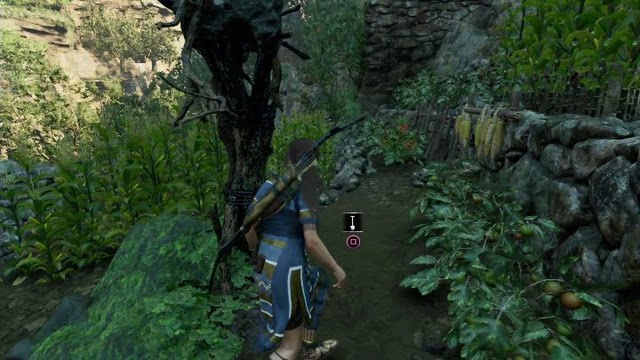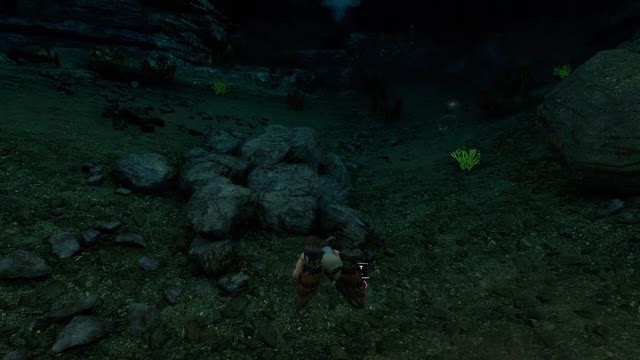Quechua Monoliths in Shadow of the Tomb Raider Game
The QUECHUA dialect is the first one you will learn in Shadow of the Tomb Raider, as it appears in the first crypt and is related to the first monoliths available in the game.
This page contains information about all the monoliths in Shadow of the Tomb Raider that use the QUECHUA dialect. We describe where to find the monoliths and how to obtain the treasure they hint at.
- Peruvian Jungle
- Kuwaq Yaku
- The Hidden City
- Mission of San Juan
Peruvian Jungle
The First QUECHUA Monolith
In the Peruvian Jungle, there is only one monolith that uses the QUECHUA dialect. It can be found in the southern part of the area, inside a stone chapel located in a water reservoir. To read it, you need to have knowledge of the QUECHUA dialect.

The monolith in the Peruvian Jungle provides the following hint: “Two serpents guard life and death. I lie trapped within their eternal struggle”. Lara will read it from the monolith, but you can also view the hints again by moving your cursor over the monolith icon on the map.

To find the treasure hinted at by the monolith, turn right and climb the stairs to the top. There, you will find a statue of two snakes, and the treasure will be in the middle of them.
Kuwaq Yaku
Second QUECHUA Monolith
In Kuwaq Yaku, there are three different monoliths, and one of them uses the QUECHUA dialect. If you follow the storyline, it will be the second monolith you encounter in Shadow of the Tomb Raider. To read it, you need to have knowledge of the QUECHUA dialect.
To make the monolith icon appear on the map, you need to talk to a man by the ruins.

The monolith provides the following hint: “Take a deep breath and find me right under another’s nose”. Lara will read it by examining the monolith, but you can also view the hints again on the map by moving your cursor over the monolith icon.

The treasure is located underwater, directly beneath the statue in the water. To reach it, dive into the water next to the monolith and swim through the narrow rocks.

After swimming to the other side, find the large stone statue of a head, and the treasure will be just below it. Dig it out to complete the monolith.
The Hidden City
Third QUECHUA Monolith
The third QUECHUA monolith in Shadow of the Tomb Raider is located in The Hidden City. There are seven different monoliths in the game, some of which use the QUECHUA dialect.

There is a monolith on the eastern side of the city that people gather around to worship.

The monolith has a clue that reads, “A long sentry stands guard over me and his harvest”. Lara will examine the monolith to read it, but if you need to read it again, you can use the map. Simply move your cursor over the monolith icon and the hint text will appear.

The treasure is located among the crops, just behind the ancient scarecrow. There are also various raw materials around it.
Mission of San Juan
The Fourth QUECHUA Monolith
The last location in Shadow of the Tomb Raider is Mission of San Juan, where you will find a QUECHUA monolith. To unlock it, you must have a level 2 knowledge of this dialect.

This monolith is situated in the eastern part of the city, on a rock surrounded by trees. No people are present in the area.

Lara reads a hint from the Monolith – “I swim with a turtle, seen only by those who let fear fall away”.

In the water reservoir located on the right side of the monolith, stones are arranged at the bottom in a pattern resembling a turtle. Based on the hint, you need to swim as close to it as possible, and you will find the treasure near its back limb.
FAQ
What are Quechua monoliths in Shadow of the Tomb Raider game?
Quechua monoliths are large stone structures found in the game Shadow of the Tomb Raider. They are a representation of the Incan culture and are used to solve puzzles and progress through the game. These monoliths are usually found in hidden areas and require the player to decode the Quechua language in order to understand the puzzle and proceed. The Quechua language was one of the main languages spoken by the Incan people and is still spoken by a large number of people in South America today. The monoliths in the game are a nod to the history and culture of the Incan civilization and add an educational and cultural aspect to the gameplay.
Why are Quechua monoliths important in Shadow of the Tomb Raider game?
Quechua monoliths are important in Shadow of the Tomb Raider game as they add an educational and cultural aspect to the gameplay. They represent the Incan civilization and their culture, which is an important part of South American history. The monoliths also provide a challenge to the player as they require the decoding of the Quechua language in order to solve the puzzles and progress through the game. By including the Quechua language and culture in the game, the developers of Shadow of the Tomb Raider have shown a respect and appreciation for the diversity of the world. In addition, the monoliths add a sense of exploration and discovery to the game, as they are usually hidden in remote areas and require the player to explore and uncover them.

James, a young and enthusiastic gamer. With a passion for gaming, he personally plays and experiences the games he writes about, providing authentic and insightful content to fellow gamers.
